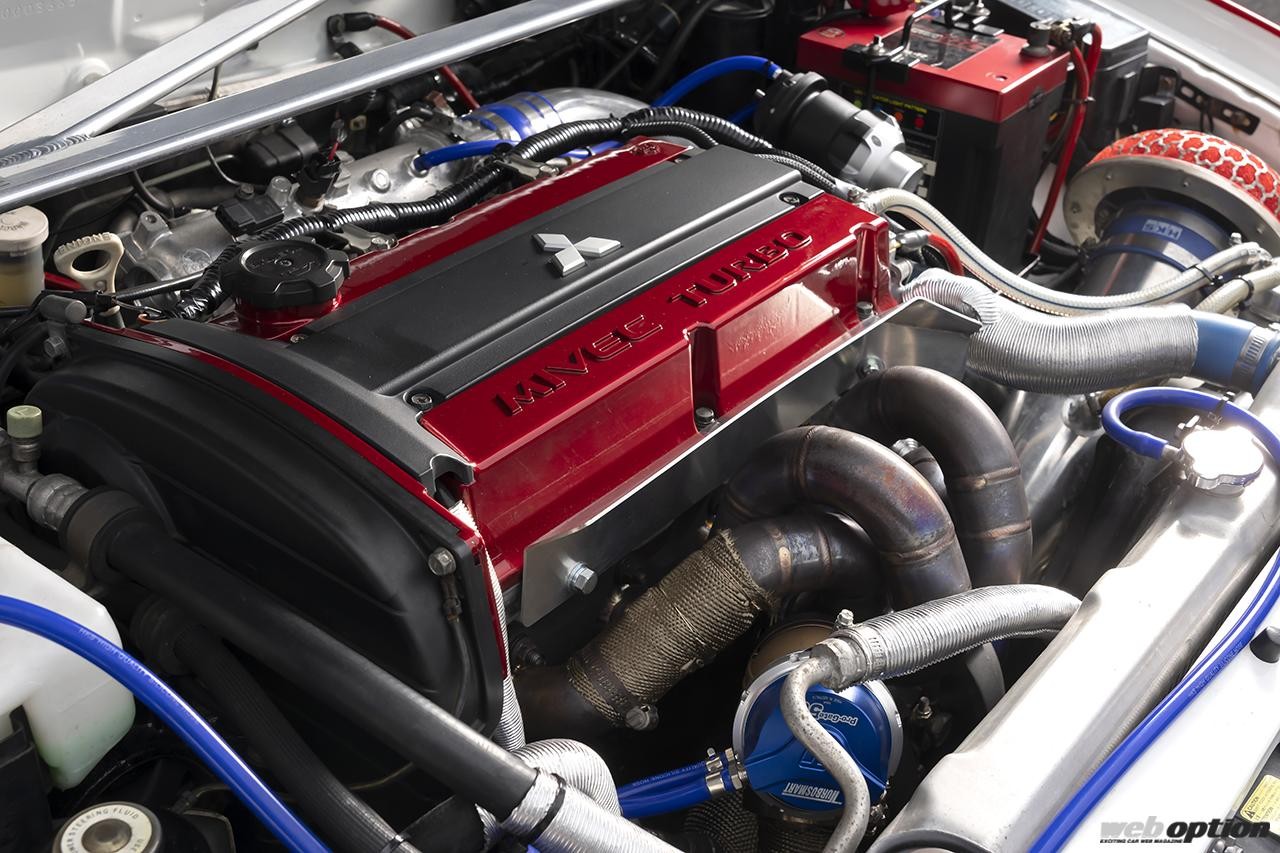An Enthusiast’s 20-Year Journey of Tuning and Perfection
For over two decades, Watanabe-san has tirelessly refined his 1996 Mitsubishi Lancer Evolution IV, transforming it into a machine of precision and power. Initially purchased for its practicality and rally-inspired allure, this car has evolved dramatically under his ownership.
 Mitsubishi Lancer Evolution IV with wide-body kit
Mitsubishi Lancer Evolution IV with wide-body kit
Starting Point: The Right Foundation
When Watanabe-san bought the car, it already had 80,000 kilometers on the odometer. Remarkably, the suspension and ECU had been upgraded, and the vehicle was well-maintained. For the first 20,000 kilometers, he enjoyed the car’s original tuning but later decided to upgrade it further when it hit 100,000 kilometers.
The MIVEC Swap: Revolutionizing the Heart of the Evo IV
Looking for more performance, Watanabe-san replaced the original 4G63 engine with the MIVEC-equipped 4G63 from a Lancer Evolution IX. This upgrade provided superior performance across all RPM ranges, bringing significant benefits over an engine overhaul. Once transformed, the Evolution IV behaved like a different beast entirely, pushing the boundaries of its original design.
 MIVEC-equipped engine with upgraded components
MIVEC-equipped engine with upgraded components
Power Boost: Enlarging to 2.3L
After 15 years with the swapped engine, it was time for another leap. Watanabe-san upgraded the engine to 2.3L with HKS’s Spec 2 Kit. A Garrett G30-770 turbocharger now pushes it to deliver 525.2 horsepower and 63.7 kgm of torque. Supporting elements include SARD 900cc injectors and a LINK G4X ECU for tuning precision.
 Close-up of Garrett G30-770 turbo system
Close-up of Garrett G30-770 turbo system
Drivetrain and Chassis Enhancements
The stock 5-speed gearbox was retained but reinforced via an overhaul, as a 6-speed replacement raised durability concerns. To manage the increased power, mechanical limited-slip differentials (LSDs) were fitted to both the front and rear. Other enhancements included a transmission reservoir tank and comprehensive fine-tuning.
Wide-Body Conversion for Better Handling
The Evo IV’s original body limited the tire size to 215mm. Feeling constrained, Watanabe-san widened the body using Varis components, allowing for 265mm tires. The impact on cornering capabilities at Suzuka Circuit was monumental, vastly improving its handling.

Dedication to Longevity and Refinement
The Evolution IV’s interior also reflects a focus on performance. A roll cage enhances structural rigidity, while auxiliary gauges ensure critical data is always visible. The Recaro RS-G seats, originally co-branded with Ralliart, highlight his long-standing dedication to quality. Recently upgraded, the new seats now occupy the driver’s side, while the old ones were reassigned to the passenger side.
 Interior with roll cage and additional gauges
Interior with roll cage and additional gauges
Preventative maintenance plays a critical role in the car’s performance longevity. Watanabe-san, an expert in mechanical systems, emphasizes replacing fluids and checking the overall condition of the vehicle over mileage-based intervals. Cutting-edge treatments like DLC coatings and WPC processing have also been applied to internal engine components to minimize wear.
 Attention paid to fluid and mechanical upkeep
Attention paid to fluid and mechanical upkeep
Constant Innovation
Whether updating parts to combat wear or adopting the latest aftermarket innovations, Watanabe-san leaves no stone unturned. Though current work commitments have reduced track time, he continues to refine areas like the braking system to ensure his Evolution IV remains a high-performance icon.
Technical Specifications
| Specification | Details |
|---|---|
| Engine | Upgraded 4G63 with MIVEC (Evo IX) |
| Engine Capacity | 2.3L (HKS Spec 2 Kit) |
| Turbocharger | Garrett G30-770 |
| Power Output | 525.2 PS |
| Torque | 63.7 kgm |
| Fuel Injectors | SARD 900cc |
| ECU | LINK G4X (plugin) |
| Transmission | 5-Speed (reinforced, OEM) |
| Tires | 265-width |
| Body Kit | Varis Wide-Body |
| Interior | Recaro RS-G Seats, roll cage |
 Fully modified Mitsubishi Evo IV on the track
Fully modified Mitsubishi Evo IV on the track









